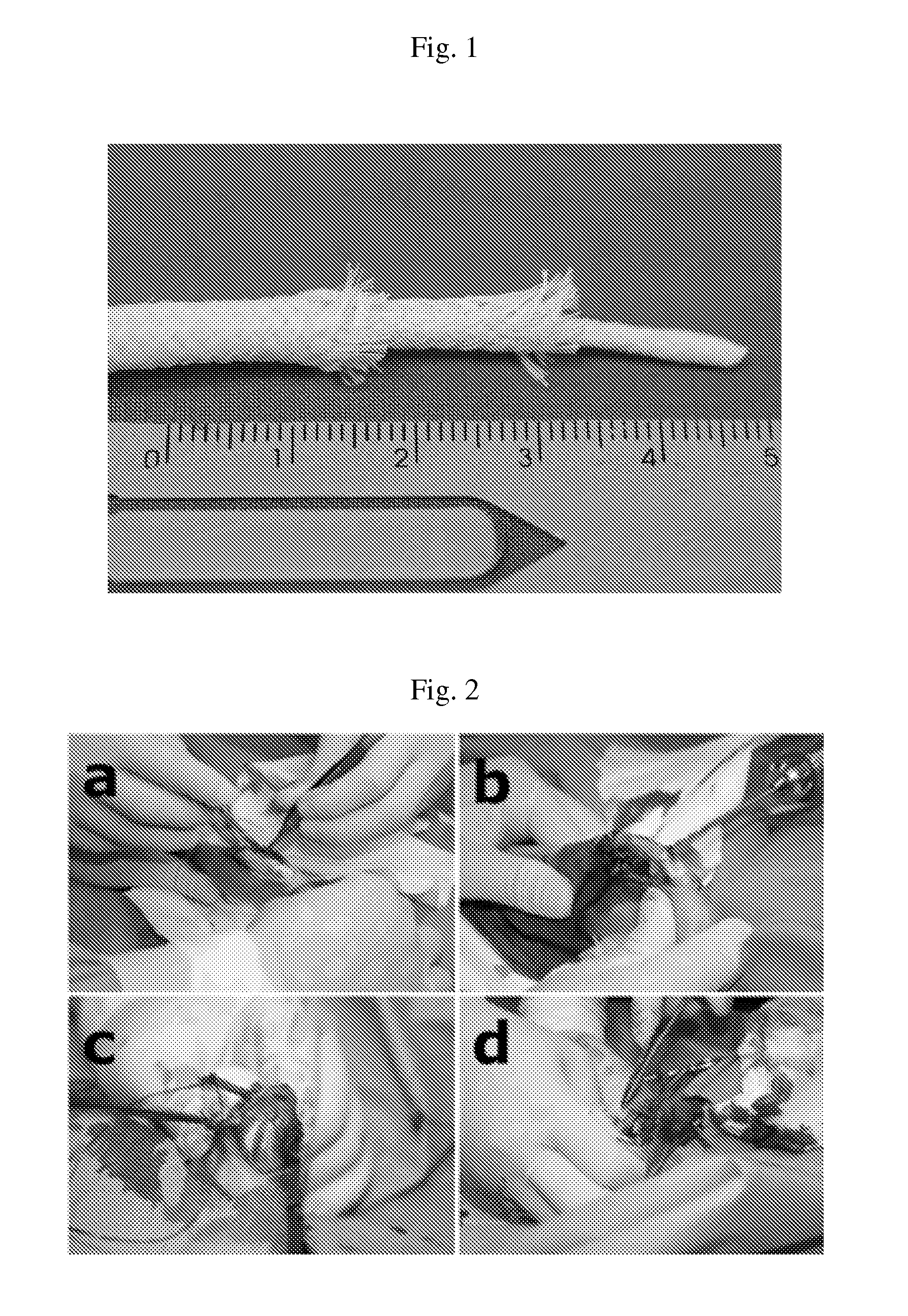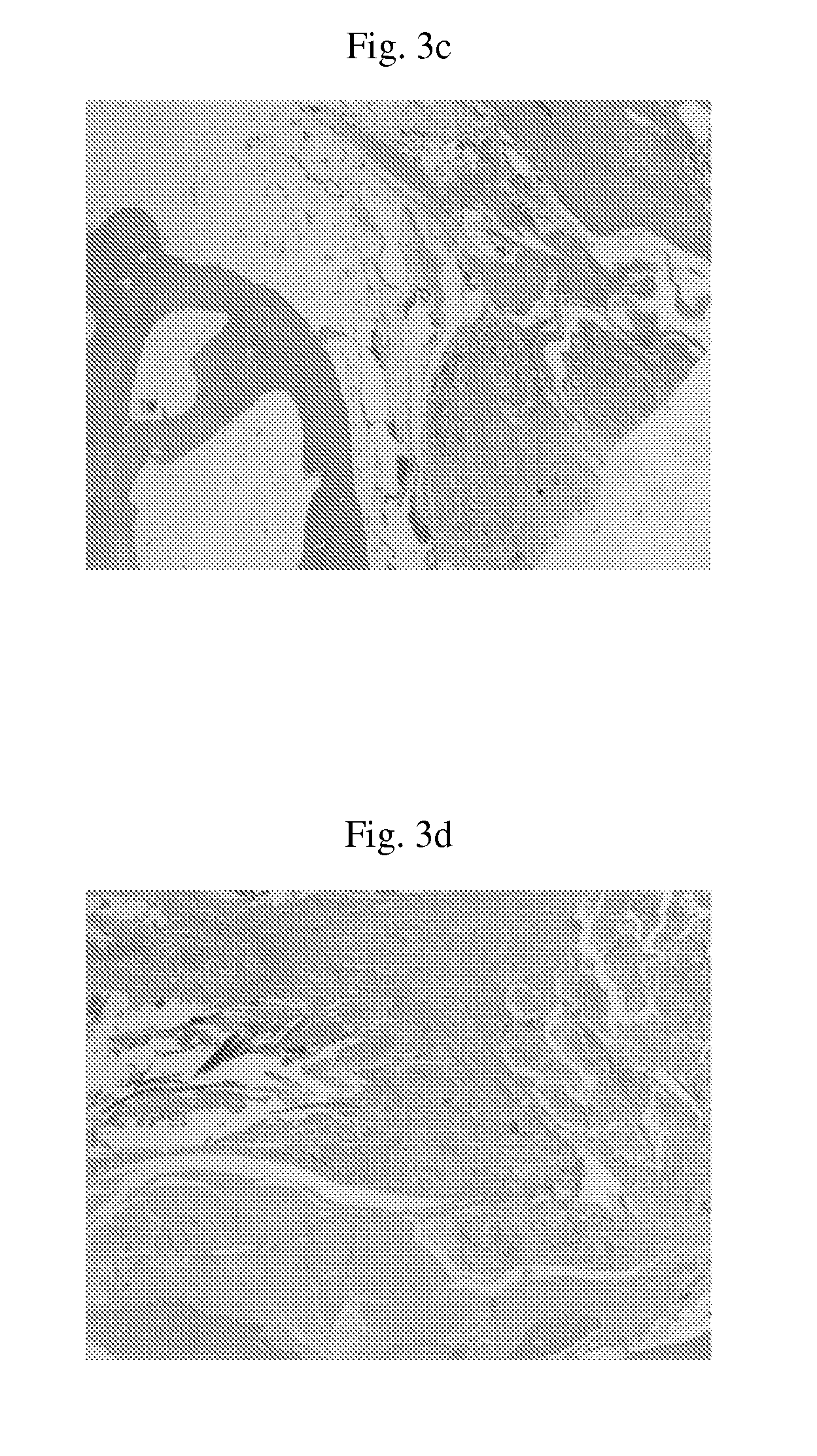Composite support containing silk and collagen, and preparation method thereof
a technology of collagen and silk, applied in the field of biodegradable scaffolds, can solve the problems of affecting the healing effect of ligaments, and inhibiting the regeneration of ligament tissue, and achieves excellent tissue regeneration and mechanical properties, and causes little or no immune response.
- Summary
- Abstract
- Description
- Claims
- Application Information
AI Technical Summary
Benefits of technology
Problems solved by technology
Method used
Image
Examples
preparation example 1
Preparation of Silk Tube Layer
[0078]Silk (Won Corporation, Korea) was woven into tubes having diameters of 2 mm and 4 mm, respectively, using a weaving machine. Then, the smaller-diameter silk tube was inserted onto the larger-diameter silk tube to form a double-layer tube. Then, to remove sericin, the tube was treated with a 0.02M Na2CO3 solution at 100° C. for 8 hours. Then, the tube was clean with 0.3% ivory cleaner, washed with triple-distilled water for 3 days, and dried at 4° C., thereby preparing a silk tube layer from which sericin has been removed.
example 1
Preparation of Composite Scaffold
[0079]Atelocollagen (Bioland, Korea) was dissolved in a 0.05 M aqueous solution of hydrochloric acid to prepare 20 mg / ml of a gel-like solution. To the gel-like solution, 20 mg / ml of chondroitin sulfate (Sigma, USA) was added in an amount of 10 parts by weight based on 100 parts by weight of the gel-like solution to prepare a mixed solution of collagen and chondroitin sulfate.
[0080]The mixed solution was injected into the double-layer silk tube prepared in Preparation Example 1. Specifically, the double-layer silk tube was placed in a silicon tube (mold), and the mixed solution was injected therein, followed by freeze-drying at −80° C.
[0081]The injection and freeze-drying step was repeated four times, and then 20 mg / ml hyaluronic acid (NovaMatrix, Norway) was injected into the tube, followed by freeze-drying at −80° C. Then, the tube was subjected to cross-linking using a carbodiimide crosslinking agent for 20 minutes, after it was washed and freeze-...
example 2
Evaluation of Effect of Composite Scaffold in Animals
[0084]To evaluate the effect of the composite scaffold for ligaments in animals, rabbits with collateral ligament injury were used.
[0085]As shown in FIG. 2, a patellar tendon site was removed from rabbits (FIG. 2a), after which the collateral ligament of the knee was removed and then a tunnel was formed in the condyle portion using a 2.5-mm drill (FIG. 2b). A scaffold, prepared by coating a collagen on the outside of the silk tube of Preparation Example 1, or the composite scaffold of the present invention, was inserted into the formed tunnel in a ‘’ shape (FIG. 2c), and then the tunnel portion was sutured in a ‘’ shape (FIG. 2d). After the surgical operation, an antibiotic was administered to the rabbits for about 10 days.
[0086]6 months after the implantation, the animal model with collateral ligament injury was subjected to histological examination in order to examine the biocompatibilities of the scaffold, comprising the collag...
PUM
| Property | Measurement | Unit |
|---|---|---|
| thickness | aaaaa | aaaaa |
| thickness | aaaaa | aaaaa |
| diameter | aaaaa | aaaaa |
Abstract
Description
Claims
Application Information
 Login to View More
Login to View More - R&D
- Intellectual Property
- Life Sciences
- Materials
- Tech Scout
- Unparalleled Data Quality
- Higher Quality Content
- 60% Fewer Hallucinations
Browse by: Latest US Patents, China's latest patents, Technical Efficacy Thesaurus, Application Domain, Technology Topic, Popular Technical Reports.
© 2025 PatSnap. All rights reserved.Legal|Privacy policy|Modern Slavery Act Transparency Statement|Sitemap|About US| Contact US: help@patsnap.com



